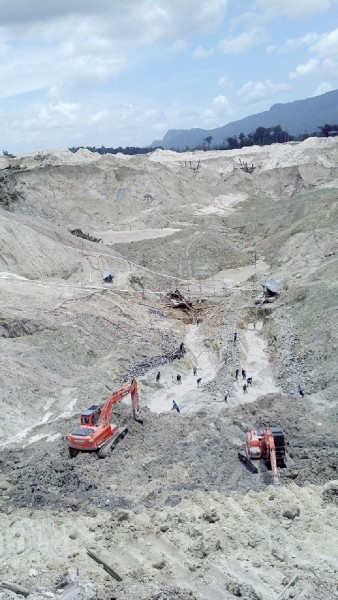Natural Resources and the Environment Minister Robert Persaud has told Stabroek Business that projects designed to determine the various sources through which mercury enters the Guianas and the distribution networks that obtain in the region, are part of a wider exercise of seeking to control the movement of the substance into Guyana’s gold-bearing communities.
“Projects have also been completed as precursors to the development of a national action plan for mercury reduction and use, as well as for updating the various codes of practice,” Persaud said in response to questions put to him. Mercury is known to enter Guyana through neighbouring Suriname.

While Persaud told this newspaper that the stakeholders in the sector, “are aware of the need to increase gold recoveries and eliminate the use of mercury in the gold extraction process,” he disclosed that the disbursement of monies from government’s $1 billion Mercury-Free Mining Development Fund (MFMDF) must now await a determination of the technical criteria to be used.
Persaud told Stabroek Business that after the government had taken “the proactive step” of creating the MFMDF “given the commitment to the Minamata Convention,” commercial banks and financial institutions which were invited to submit proposals for the management of the fund had requested “technical criteria that would be used in the evaluation of applications for funding.”
Given this, note was taken of the need to identify the “relevant alternative technologies and testing to ensure that these technologies are appropriate and best suited for the various areas,” he added. This was deemed a first step before the funds allocated to the MFMDF could be dispersed to assist in the adoption of the relevant technologies.
A working group comprising the Institute of Applied Sciences and Technology (IAST), the Guyana Gold and Diamond Miners Association (GGDMA), University of Guyana (UG), Guyana Mining School and Training Centre (GMSTC) and Guyana Geology and Mines Commission (GGMC) was established to undertake the identification and testing of alternative technologies and “to make the necessary recommendations to the board to guide the technical criteria required by the financial institutions,” he said.
To date, the working group has tested various technologies including gold flotation, the Knelson Concentrator, shaking tables and Gold Kacha Concentrator. He added that additional tests were expected to be fielded on the Spiral Concentrator and that “extensive field testing” was also being carried out on “other alternative technologies.”
Persaud indicated, meanwhile, that the GGDMA and GGMC were engaged in identifying and testing the various technologies available “so that these processes can be adopted by mining operations” in order to ensure “greater recoveries, reduced costs, increased revenues and a sustainable gold mining sector.”
He also stated that apart from the provision of financing through the MFMDF, the GGMC has engaged in collaborative initiatives with the World Wildlife Fund Guianas over the past two years. These include the development of a curriculum for the GMSTC, which focuses on training in best practices for new entrants and existing small and medium scale operators.
Persaud also alluded to “continuing collaboration between the GGMC and EPA with respect to water quality monitoring and other aspects of environmental management” and work being carried out by the GGMC “in a reclamation project for mined out areas to restore vegetation and forest cover as much as possible.”
Persaud said the adoption and use of mercury free and improved recovery technologies is “even more critical now given the low gold prices experienced by the sector.”




